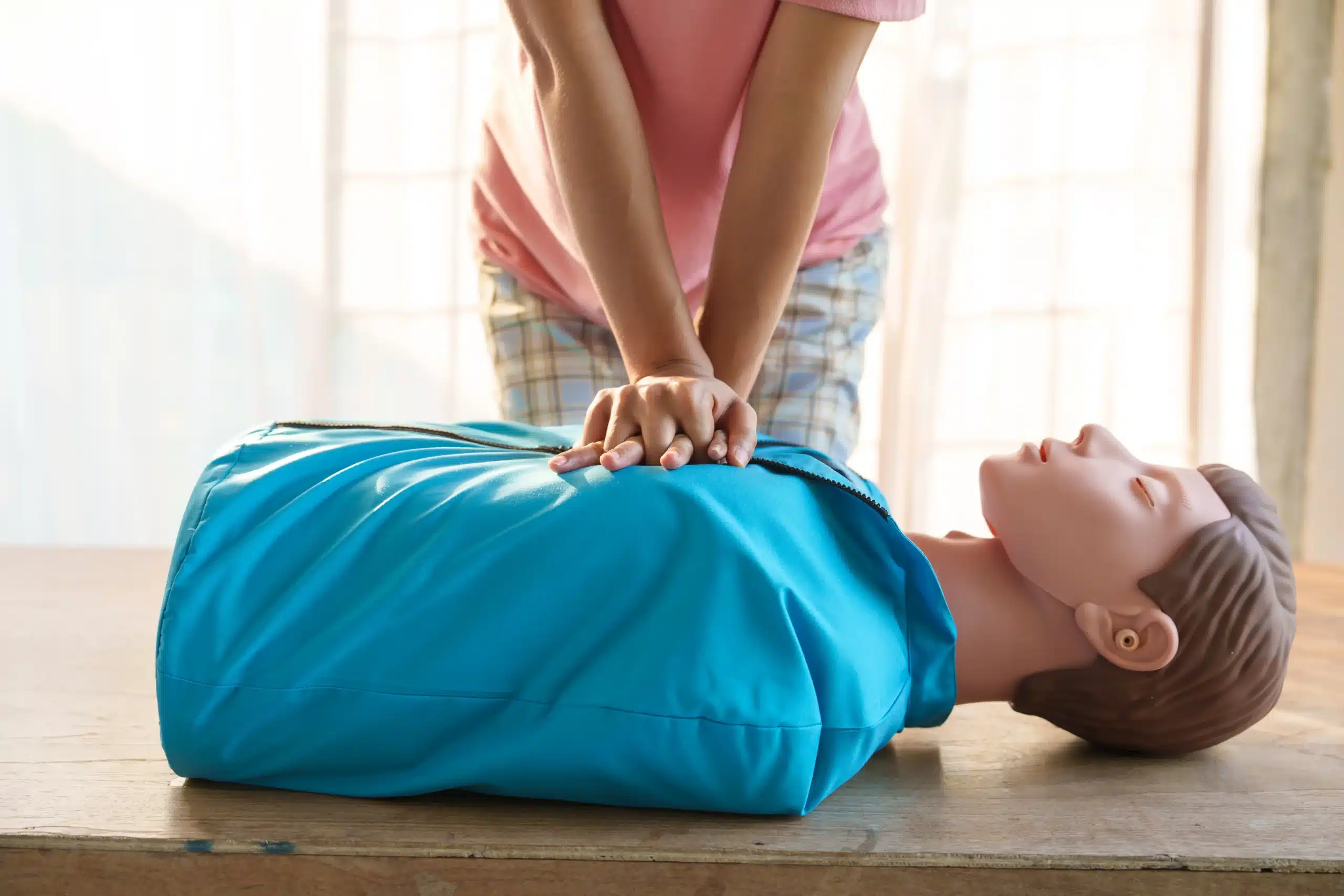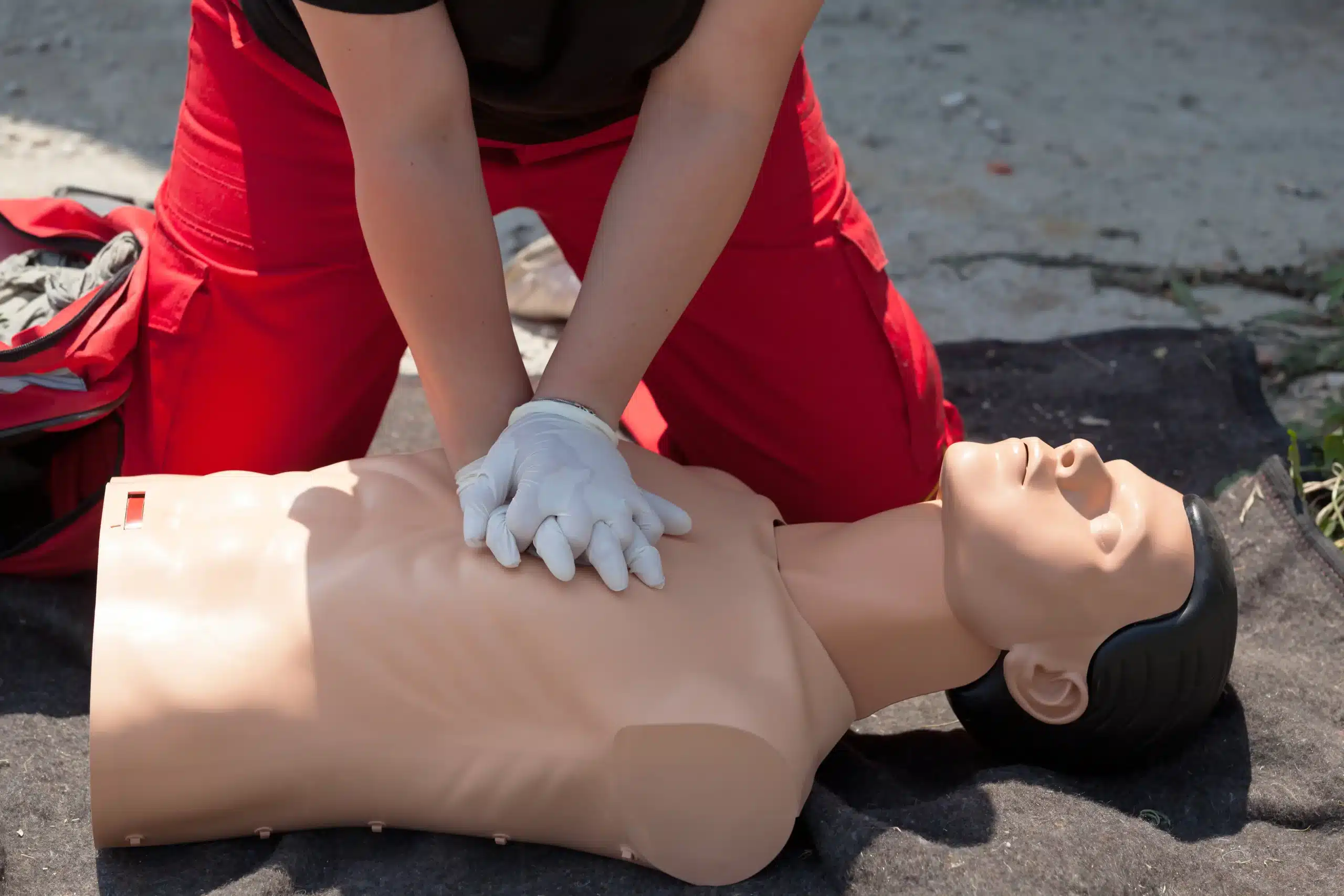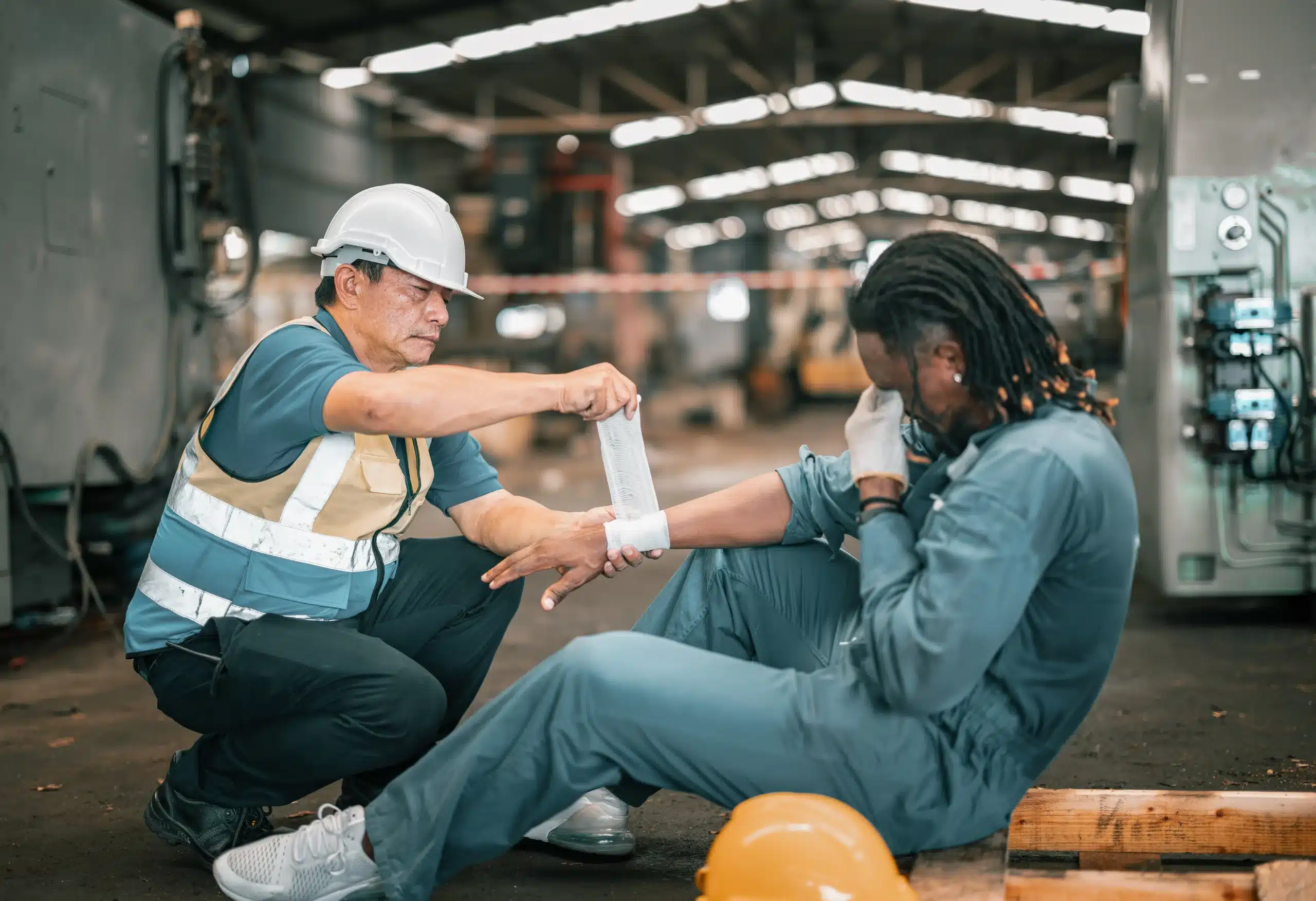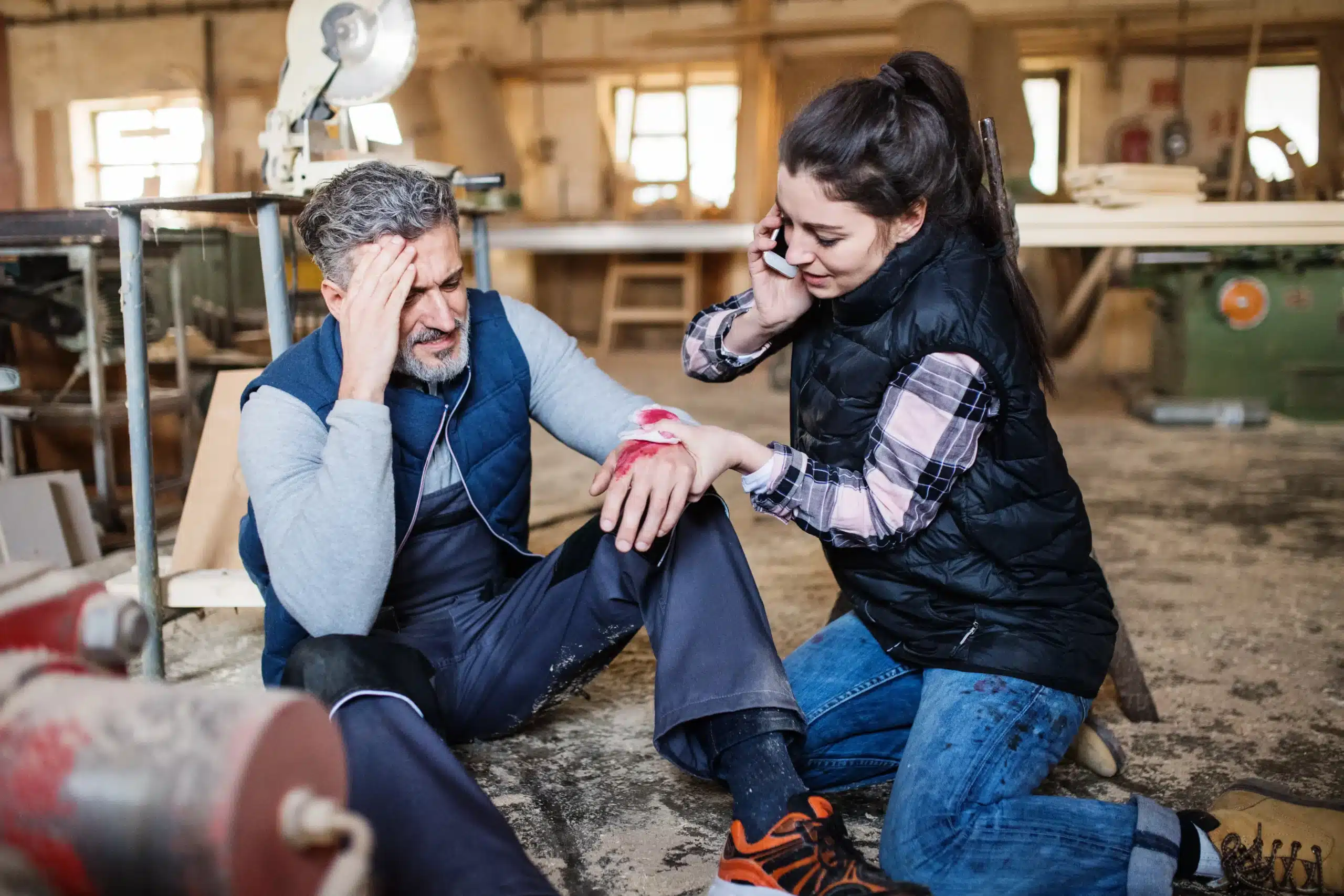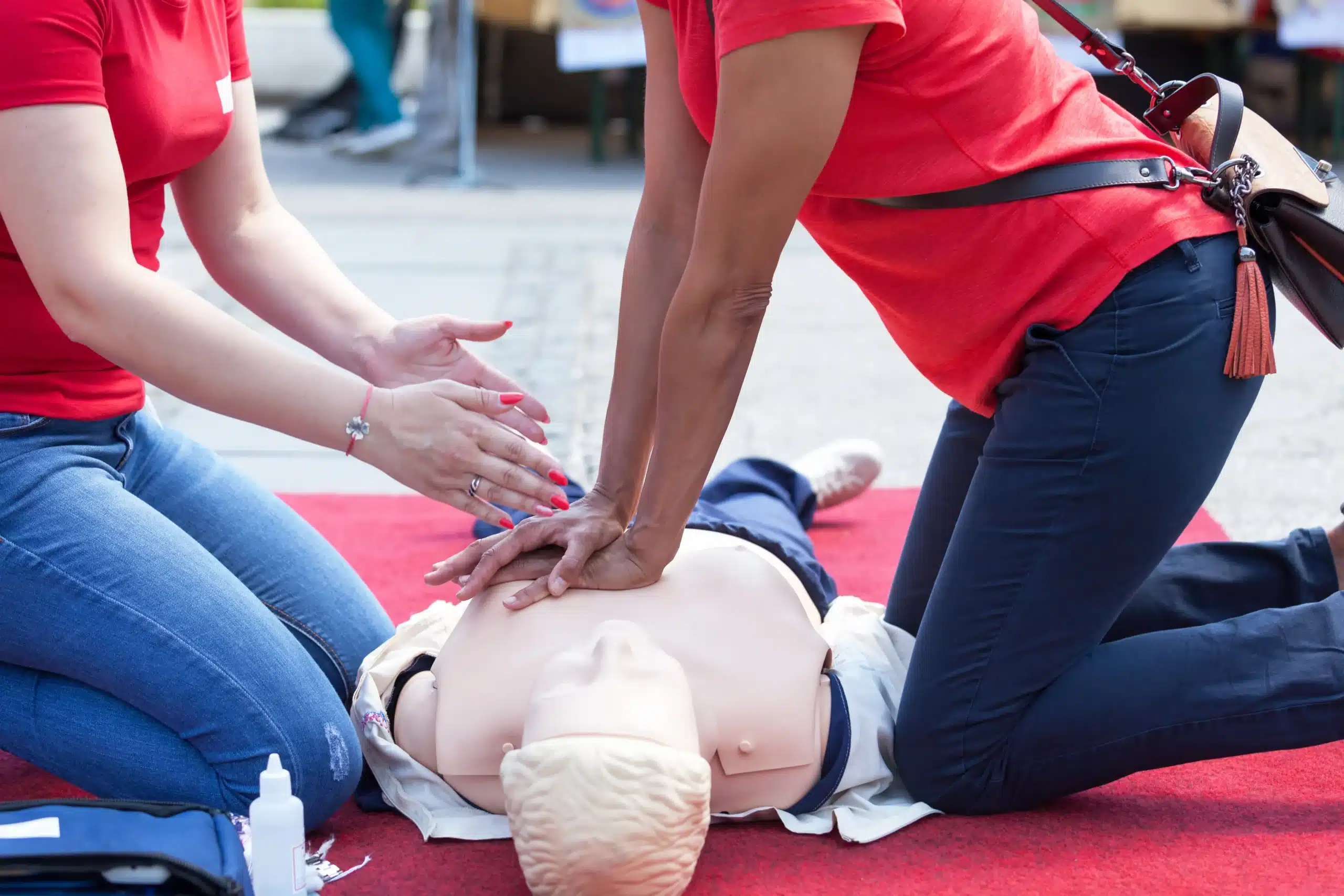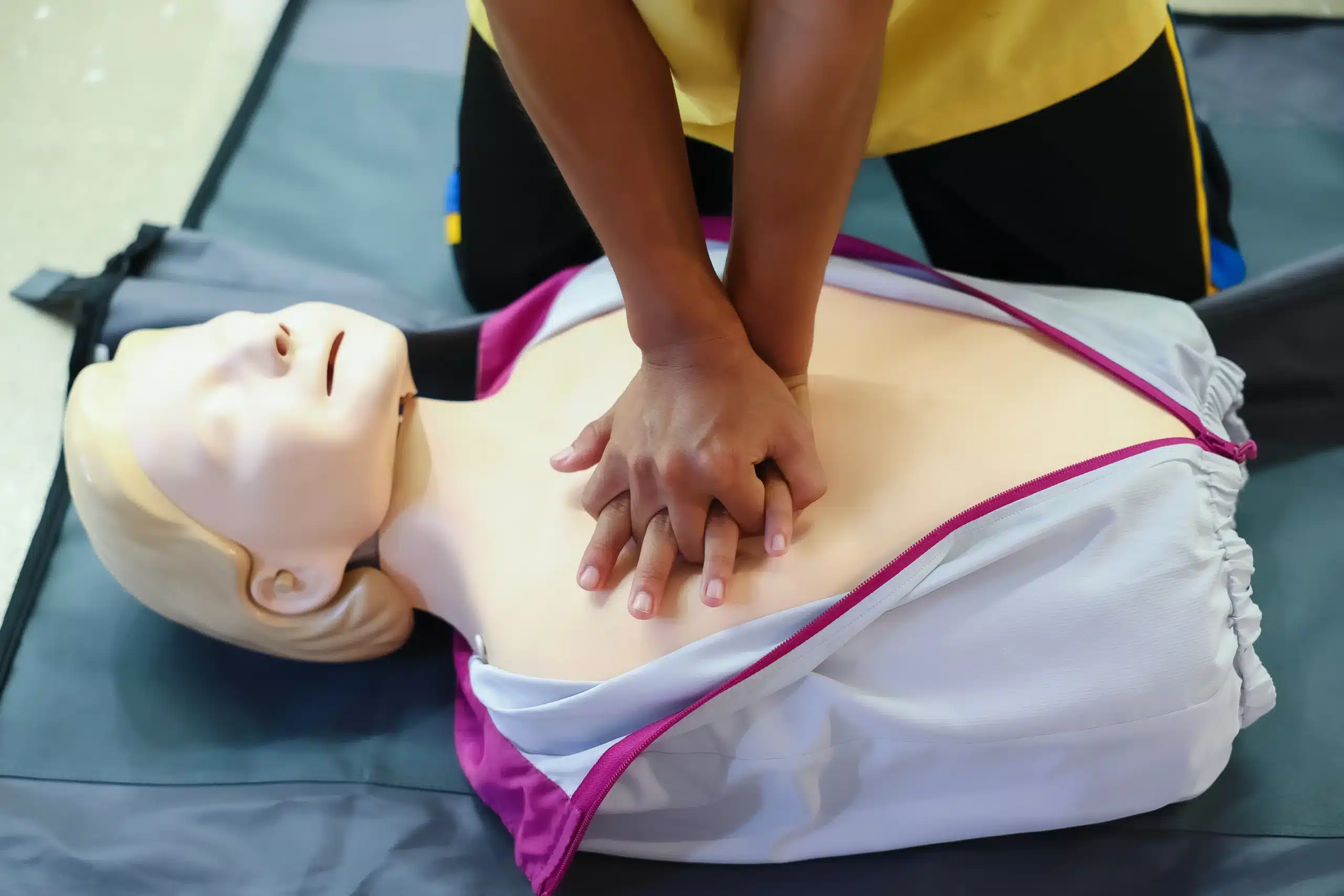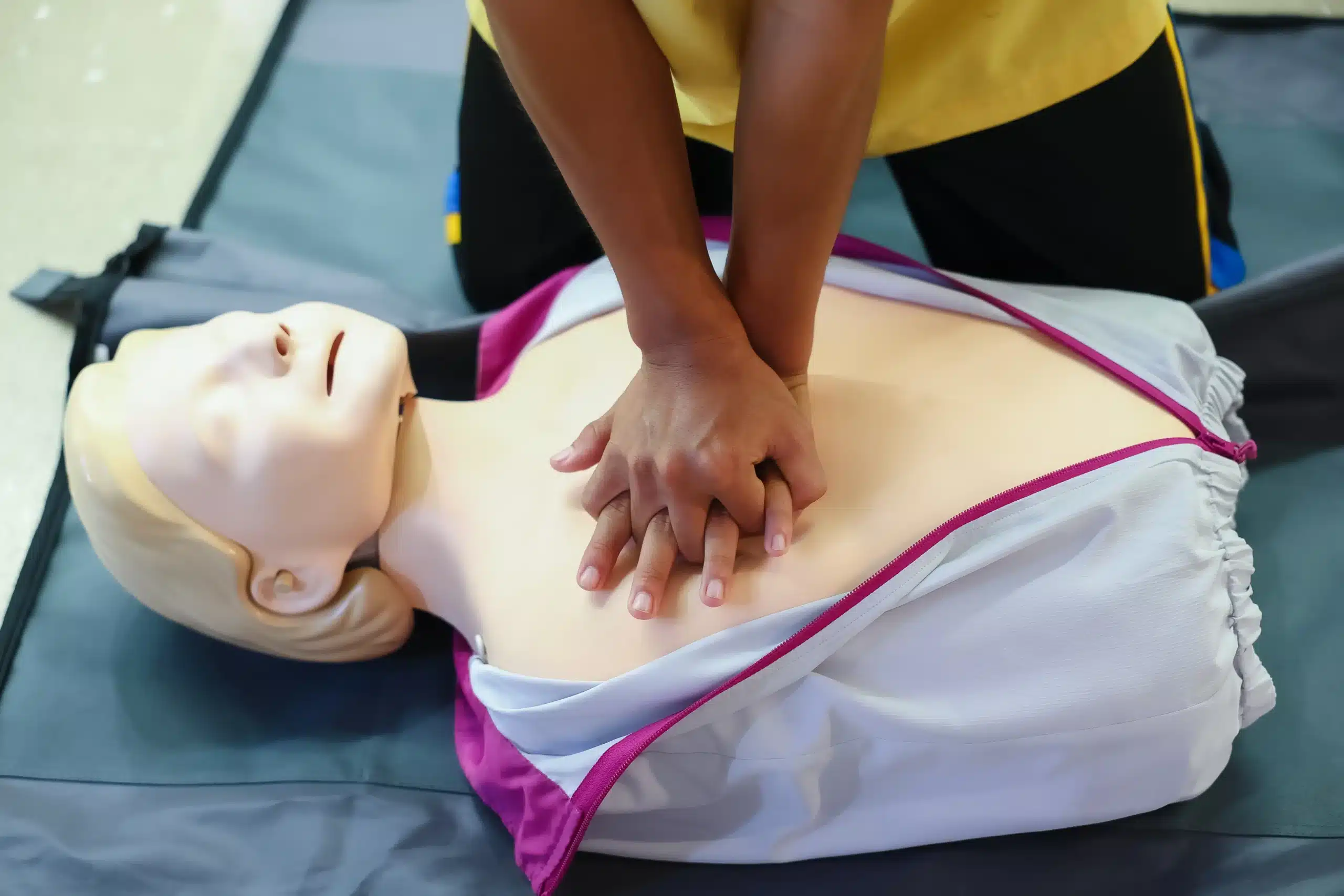In the face of a medical emergency, seconds can matter. Knowing how to respond quickly and effectively can be the difference between life and death. That’s where BLS training comes in. BLS classes near me provide the essential skills and knowledge to handle a range of emergencies, from cardiac arrest and respiratory distress to choking. This comprehensive guide will explore the ins and outs of BLS certification, helping you understand its importance, the skills you’ll learn, and how to find the perfect BLS class to fit your needs and schedule. Whether you’re a healthcare provider or simply want to be prepared for anything, this article is your roadmap to becoming BLS certified.
Key Takeaways
- BLS certification equips you with life-saving skills applicable in various settings. It builds upon basic CPR, adding advanced techniques for healthcare providers and anyone wanting to be prepared for emergencies. Explore different learning paths, from initial certification to becoming an instructor.
- Finding the right BLS course requires careful consideration. Choose an AHA-approved provider with experienced instructors, and prioritize hands-on training in a comfortable learning environment. Student reviews and testimonials offer valuable insights into course quality.
- Proper preparation enhances your BLS learning journey. Review pre-course materials, gather necessary supplies, and understand the distinctions between BLS and CPR. Remember the importance of in-person skills assessment for AHA certification.
What are BLS Classes & Why are They Important?
Basic Life Support (BLS) classes teach the skills needed to respond to life-threatening emergencies. These classes cover core techniques like CPR, using an AED, and relieving airway obstructions. BLS certification is vital for healthcare providers and anyone who wants to be prepared for emergencies. It emphasizes early intervention and high-quality CPR, crucial for improving survival rates in cardiac arrest and other emergencies. BLS training gives you the confidence to act quickly and effectively when every second counts.
BLS vs. CPR: What’s the Difference?
While both BLS and CPR focus on life-saving techniques, there are key differences. CPR (Cardiopulmonary Resuscitation) generally refers to the basic techniques anyone can learn to help someone who has stopped breathing or has no pulse. Think chest compressions and rescue breaths. BLS (Basic Life Support) builds upon those CPR skills and is designed for healthcare professionals, first responders, and other designated rescuers. BLS covers more advanced techniques for managing cardiac arrest, respiratory distress, and airway obstructions, often in a team setting. It also includes training on using equipment like bag-valve masks and advanced airways. The Red Cross offers more information on the differences between BLS and CPR certifications.
Who Needs BLS Certification?
BLS certification is essential for healthcare providers like doctors, nurses, paramedics, and other professionals working in hospitals, clinics, and emergency medical services. It’s also often required for those in roles such as lifeguards, certified nursing assistants (CNAs), and other healthcare support staff. Beyond these professions, BLS certification is valuable for anyone who wants to be prepared to help in a medical emergency. This could include teachers, coaches, personal trainers, or even concerned family members. The ability to provide immediate, effective assistance can significantly improve outcomes before professional help arrives. For healthcare workers, demonstrating these skills in person is a crucial part of the American Heart Association’s certification process. Safety Training Seminars offers BLS courses in San Jose and the American Heart Association’s RQI program, a resuscitation quality improvement program for healthcare professionals.
Find BLS Classes Near You
Finding the right BLS class is easier than you think. Whether you’re getting certified for the first time, renewing your certification, or even considering becoming an instructor, there are options to fit your needs and schedule. Let’s explore the different paths available.
Basic Certification
BLS certification provides you with the essential skills to respond to emergencies. This training covers CPR, AED usage, and basic airway management. This foundational knowledge is crucial for anyone who wants to be prepared, whether in a professional healthcare setting or simply for personal preparedness. If you’re in the San Jose area, consider checking out these BLS courses in Willow Glen.
Renew Your Certification
Keeping your BLS certification up-to-date is vital. Why? Because guidelines and best practices in emergency care can change. Regular renewal ensures your skills and knowledge are current, which can significantly improve outcomes in a real emergency.
Become a BLS Instructor
If you’re passionate about BLS and want to empower others, becoming an instructor might be a great fit for you. Teaching BLS deepens your understanding of the material and hones your skills through practice and demonstration. Plus, leading team-based simulations can enhance your proficiency in team dynamics, communication, and leadership. Learn more about the rewarding path of becoming a BLS instructor.
Online & Hybrid Options
Tight schedule? Online and hybrid BLS courses offer the flexibility you need. These courses often use a blended learning approach that caters to different learning styles and preferences, making BLS training accessible to a wider range of individuals. Explore the advantages of online and hybrid learning for BLS certification.
What Happens in a BLS Class?
BLS certification classes equip you with the skills to respond confidently during medical emergencies. They blend classroom instruction with hands-on practice, ensuring you’re prepared to act quickly and effectively. Let’s break down what you can expect during a typical BLS course.
Class Format & Duration
BLS classes follow a structured format designed for optimal learning. Expect a combination of lectures, demonstrations, and interactive discussions covering essential emergency response skills like CPR, using an AED, and basic airway management. The four-step approach used in many BLS training programs caters to various learning styles, ensuring everyone grasps the core concepts. Most BLS courses can be completed in a single day, typically lasting between four and six hours, depending on the curriculum and provider. Our BLS courses in San Jose follow this efficient format, allowing you to become certified quickly.
Key Topics
A BLS class delves into a range of life-saving techniques. You’ll learn how to recognize the signs of a cardiac arrest, perform high-quality CPR on adults, children, and infants, and effectively use an AED. Airway management techniques are also a crucial component, teaching you how to open and maintain a clear airway. Beyond these core skills, BLS certification often includes advanced resuscitation skills and other techniques tailored for healthcare providers and professional rescuers. This comprehensive approach ensures you’re well-versed in various emergency scenarios. For those seeking more advanced training, consider exploring our American Heart Association BLS course.
Hands-on Practice
Hands-on practice is the cornerstone of effective BLS training. You’ll have ample opportunity to practice your skills on manikins, simulating real-life scenarios. This practical experience builds muscle memory and confidence, allowing you to react swiftly and efficiently under pressure. Regularly practicing your BLS skills after the class is essential to maintain proficiency and ensure you’re always ready to respond. Studies show that consistent practice is key to mastering these essential life-saving skills. Safety Training Seminars emphasizes this hands-on approach, understanding that practical application is crucial for effective learning.
How Much Do BLS Classes Cost?
Knowing the price range for BLS classes helps you budget and compare options. Several factors influence the final cost, so understanding them will help you make an informed decision.
Average Costs
BLS certification classes typically cost between $55 and $85. In-person training, like the BLS courses we offer in San Jose (Willow Glen), often falls within this price range. Online BLS certification may be slightly more expensive, sometimes around $85. Our low price guarantee ensures you’re getting the best possible value for your BLS training.
Factors Affecting Cost
Several factors can influence the cost of your BLS class. The most important is accreditation. Make sure any course you take is AHA-approved, like those offered at Safety Training Seminars. This ensures your certification is widely recognized and accepted. Hands-on training is another key factor. While it might slightly affect the price, practical experience is invaluable for effective learning and skill development. Finally, location can also play a role; classes in larger cities might have slightly different pricing than those in smaller towns.
Discounts & Promotions
Look for discounts and promotions to save on BLS certification. Many providers offer special deals throughout the year. Check with your chosen provider, like Safety Training Seminars, for any ongoing discounts or package deals that might include CPR and first aid training alongside your BLS certification. We frequently update our promotions, so it’s always a good idea to check back.
Choosing the Right BLS Provider
Finding the right BLS class involves more than just a quick Google search. It’s about finding a provider that aligns with your learning style and career goals. Here’s what to consider:
Accreditation & Certification
First things first, ensure the course is AHA-approved. The American Heart Association (AHA) sets the gold standard for BLS Certification. Many employers, including hospitals and clinics, require AHA-approved certifications to ensure their staff receives high-quality training. Choosing an AHA-approved course, like those offered at Safety Training Seminars, guarantees you’re receiving top-tier, recognized training.
Instructor Qualifications
The instructor’s experience matters. Look for courses led by experienced, AHA-certified instructors. Expert instructors can enrich your learning experience by sharing real-world scenarios and offering a deeper understanding of the material. This personalized approach can boost your confidence in applying your new skills.
Class Size & Learning Environment
Think about your ideal learning environment. Smaller classes often allow for more individual attention from the instructor and create a comfortable atmosphere for asking questions. Prioritize hands-on training. In-person classes are essential for developing practical skills, providing opportunities to practice techniques on mannequins and receive immediate feedback. Check out these BLS courses in San Jose for excellent in-person options.
Reviews & Testimonials
Before committing to a class, see what other students have to say. Reading online reviews from previous students gives you a sense of the instruction quality, the learning environment, and the overall experience. Testimonials offer valuable insights and help you make a well-informed decision. A provider’s low price guarantee can also be a significant factor, ensuring you receive the best value.
Top BLS Providers in San Jose
Finding the right BLS training provider is key to a positive and effective learning experience. Here are a few reputable options to explore in San Jose:
Safety Training Seminars
Safety Training Seminars, a woman-owned AHA Training Center, offers various courses, including BLS, ACLS, PALS, CPR, and First Aid. They prioritize excellent customer service and offer a low price guarantee, making them a smart choice for individuals and healthcare professionals seeking certification or recertification. Their flexible scheduling, with classes offered daily, accommodates busy schedules. Learn more about their BLS courses in San Jose. They also offer the American Heart Association’s RQI program, a convenient option for healthcare providers to maintain their BLS skills. They also provide a course on lead poisoning prevention for California childcare providers.
AHA Training Centers
The American Heart Association (AHA) has numerous training centers throughout San Jose. These centers adhere to the latest AHA guidelines, ensuring high-quality, comprehensive training. They offer BLS certification for both healthcare providers and the general public. You can find an AHA Training Center near you by searching online or checking the AHA website.
Red Cross
The American Red Cross is another well-known provider of BLS training in San Jose. Their courses cover essential life-saving skills and techniques for various emergency situations. Visit the Red Cross website to find a course near you.
Local Hospitals
Many hospitals in San Jose offer BLS training courses, often designed for healthcare professionals. Some hospitals also extend these courses to the community. Contact local hospitals directly or check their websites for more information on their BLS training programs.
Get BLS Certified
Getting your BLS certification is straightforward. It involves choosing an accredited provider, completing the required coursework, and passing a skills test. Let’s break down the process:
Steps to Certification
-
Find a course: Locate a BLS course near you. Organizations like the American Heart Association (AHA), the American Red Cross, and various hospitals and community centers offer these courses. Safety Training Seminars offers BLS training in San Jose and nearby cities.
-
Register and attend: Once you’ve found a course, register and attend all sessions. These courses typically combine classroom instruction with hands-on practice.
-
Learn the skills: You’ll learn essential life-saving skills, including CPR, AED use, and how to relieve choking. Instructors will guide you through the proper techniques and provide feedback.
-
Pass the skills test: After completing the coursework, you’ll demonstrate your proficiency through a skills test. This test typically involves performing the skills you’ve learned on a manikin.
-
Receive your certification: Upon successfully completing the course and skills test, you’ll receive your BLS certification card. This card validates your qualification and is often required for healthcare professionals and other roles.
Validity & Recertification
BLS certification is typically valid for two years. To maintain your skills and stay current with the latest guidelines, recertify before your current certification expires. The American Heart Association offers a streamlined recertification process, often shorter than the initial certification course. Recertification ensures you’re prepared to provide high-quality care in emergencies. For healthcare professionals, Safety Training Seminars offers the flexible RQI program as a convenient recertification option.
Prepare for Your BLS Class
Getting ready for your BLS class involves a little more than just signing up. A bit of prep work can make a big difference in how much you get out of the experience. Here’s what you should know:
What to Bring
While your BLS provider will supply the mannequins and other major equipment, there are a few small things you can bring to enhance your learning. A notebook and pen are always helpful for jotting down key takeaways or any questions that come up during the session. Since many courses now incorporate digital resources, consider bringing a tablet or smartphone to easily access online materials and supplemental content. This can be especially helpful if you, like many, find that technology-assisted learning improves your understanding. And, of course, don’t forget a water bottle to stay hydrated!
Pre-Course Study Materials
One of the best ways to prepare for your BLS class is to review any pre-course materials your instructor provides. Whether it’s a textbook, online modules, or videos, familiarizing yourself with the content beforehand can significantly improve your comprehension and retention in class. Studies show that engaging with these materials, regardless of your learning style, can effectively prepare you for the practical skills and improve your overall performance. Understanding your individual learning style preferences can also help you tailor your study approach. For example, if you’re a visual learner, focus on diagrams and videos. If you’re kinesthetic, try practicing the techniques. The key is to find what works best for you and use it to your advantage. This preparation not only boosts your confidence but also allows you to focus on mastering the skills during the hands-on portions of the class. Think of it as a head start on becoming a confident BLS provider.
BLS Training Myths
Clearing up some common misconceptions about BLS training can help you find the right course for your needs. Let’s debunk a few myths!
BLS vs. CPR
One of the biggest misunderstandings is that BLS and CPR are interchangeable. They’re related, but not the same. Think of CPR as a foundation and BLS as building upon those essential skills. CPR teaches chest compressions, rescue breaths, and how to recognize a cardiac arrest. BLS certification adds techniques specifically for healthcare providers and first responders, covering airway obstructions, respiratory distress, team dynamics, and using equipment like bag-valve masks and AEDs. The American Red Cross offers a helpful explanation of the differences between the two certifications on their site. If you’re pursuing a healthcare career, BLS certification is likely required.
Online vs. In-Person
Another common myth surrounds online BLS training. While you can complete parts of the coursework online, the American Heart Association (AHA) requires an in-person skills assessment for BLS certification. There’s no shortcut—you’ll have to demonstrate your skills to a certified instructor. Some providers offer hybrid BLS courses that combine online learning with in-person skills sessions. This format offers flexibility for the knowledge portion, but the hands-on component is essential. Online discussions highlight the value of the in-person assessment, even for those comfortable with online learning. Many students find the hands-on practice and instructor feedback invaluable.
Benefits of BLS Certification
Getting your BLS certification is more than just checking a box; it’s an investment in yourself, your career, and your community. Whether you’re a healthcare professional, a concerned citizen, or someone looking to enhance their resume, BLS certification offers tangible benefits.
Advance Your Career
BLS certification is often a prerequisite for jobs in healthcare. It signals to employers that you have the essential skills to handle medical emergencies, making you a more competitive applicant. Many healthcare providers, from hospitals and clinics to nursing homes, require their staff to maintain current BLS certification. Even in non-medical roles, having BLS training can distinguish you, demonstrating your commitment to safety and preparedness. If you’re aiming to advance your healthcare career, BLS certification is a crucial step.
Improve Emergency Response Skills
BLS certification equips you with the knowledge and skills to respond effectively in a medical crisis. You’ll learn how to recognize the signs of a cardiac arrest, administer CPR, use an AED, and provide other life-saving interventions. Effective BLS training goes beyond individual skills, emphasizing teamwork and communication—vital in emergency situations. These skills are invaluable not only in professional settings but also in everyday life, empowering you to assist family, friends, or even strangers during emergencies. Studies show that community-based BLS training can improve bystander CPR rates and patient outcomes, highlighting the positive impact of widespread BLS training. Knowing you can make a difference in a critical situation brings confidence and peace of mind.
Related Articles
- BLS Certification in Santa Clara: A Guide for Healthcare Providers – San Jose CPR Classes
- BLS Classes in San Jose: The Complete Guide – San Jose CPR Classes
- BLS Training in San Jose: Your Ultimate Guide – San Jose CPR Classes
- CPR Certification San Jose: Your Complete Guide – San Jose CPR Classes
- BLS Classes in Santa Clara: The Complete Guide – San Jose CPR Classes
Frequently Asked Questions
What is the main difference between CPR and BLS? CPR focuses on the core techniques of chest compressions, rescue breaths, and recognizing cardiac arrest. BLS builds upon these skills, adding training for healthcare providers and first responders on airway management, using equipment like AEDs and bag-valve masks, and working effectively in a team. BLS certification is generally required for healthcare professionals, while CPR training is valuable for anyone.
How long does it take to get BLS certified? Most BLS courses can be completed in a single day, usually lasting between four and six hours. The duration can vary slightly depending on the specific curriculum and the training provider. Renewal courses are often shorter.
How much does a BLS class typically cost? BLS classes generally range from $55 to $85, with online courses sometimes slightly higher. Factors like the training provider, location, and any included materials can influence the final cost. Look for providers offering discounts or package deals that combine BLS with other certifications like CPR and first aid.
How do I choose a reputable BLS training provider? Look for providers offering AHA-approved courses, as this is the recognized standard, especially for healthcare professionals. Consider factors like instructor experience, class size, and the learning environment. Reading reviews and testimonials from previous students can give you valuable insights into the quality of training and the overall experience.
How often do I need to renew my BLS certification? BLS certification is typically valid for two years. Recertification is essential to stay up-to-date with the latest guidelines and maintain your skills. The recertification process is often shorter than the initial certification course. Some providers offer flexible options like the RQI program for healthcare professionals.


